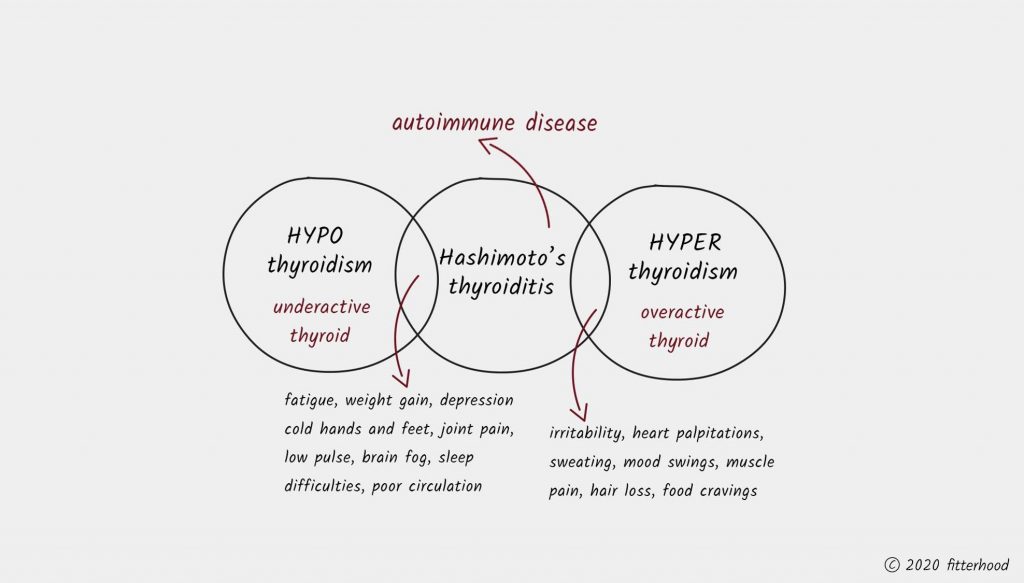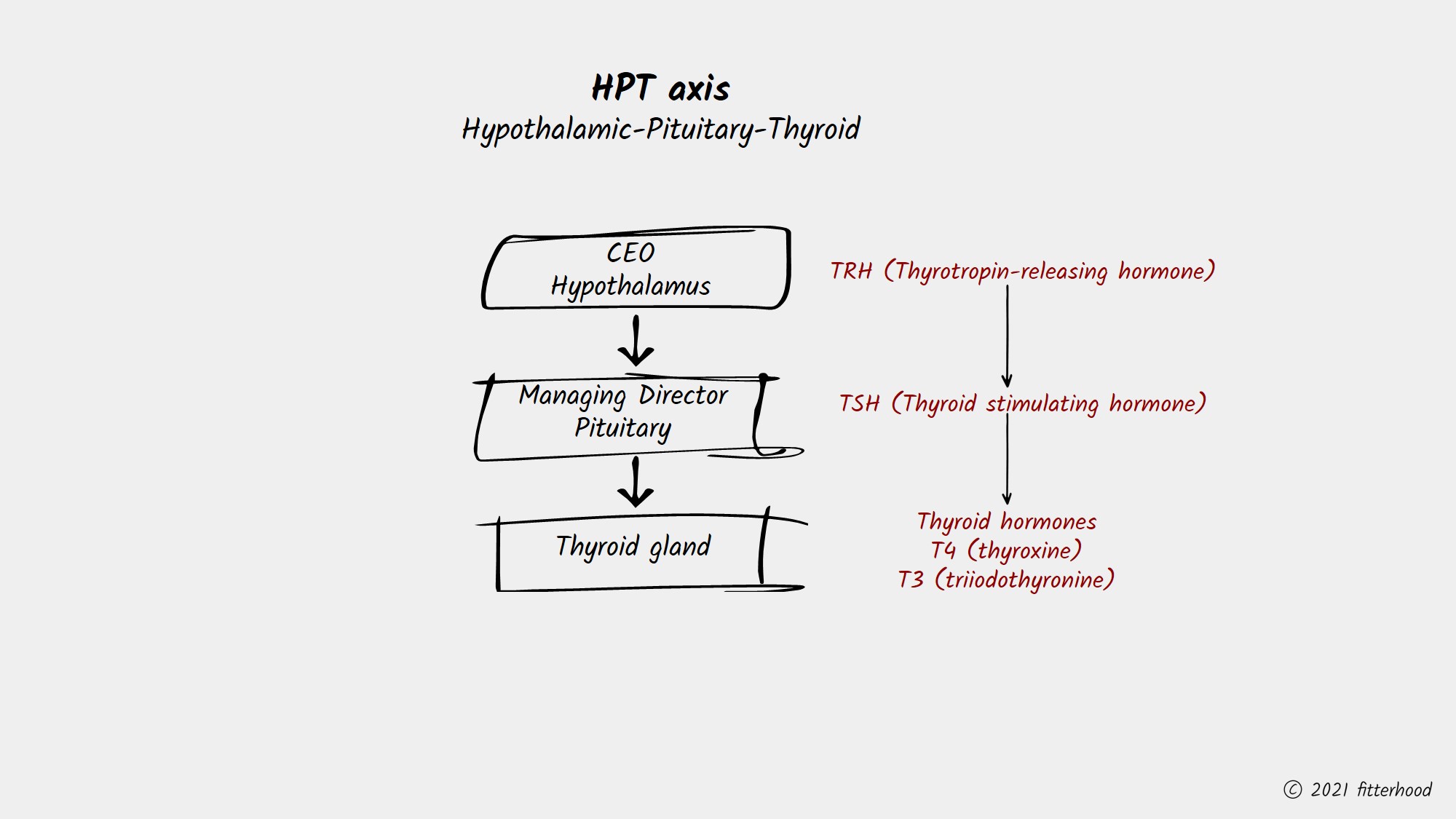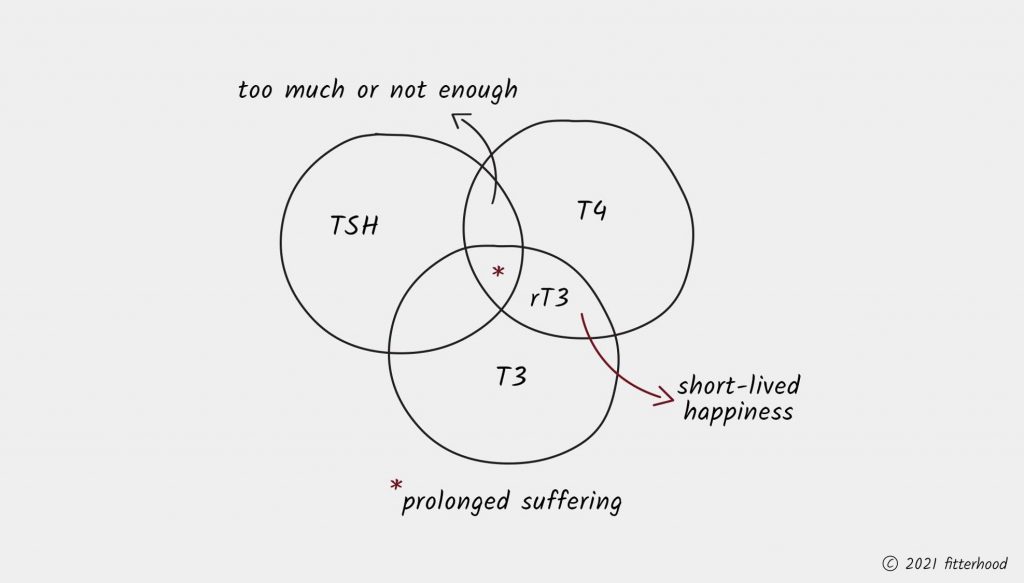Science Alert
in case you feel like getting nerdy with me
What is Hashimoto's anyway?
Hashimoto’s Thyroiditis is an autoimmune disorder in which the immune system creates antibodies that damage the thyroid gland by causing inflammation, or thyroiditis. It was named after the Japanese surgeon who described it in 1912. It was recognised in 1957 as an autoimmune disorder. Thyroiditis, means an inflammation of the thyroid gland. The immune system produces Thyroid Peroxidase Antibodies (TPO-Ab) to attack and neutralize the thyroid (the butterfly shaped gland at the front of your neck). This damage to the thyroid gland causes inflammation. TPO is an enzyme normally found in the thyroid gland and plays an important role in the production of thyroid hormones: Thyroxine (T4) and Triiodothyronine (T3). When blood tests detect TPO-Ab, it means that your immune system is producing enough antibodies to attack your own thyroid healthy tissues. Hence the inflammation. Another indicator of this autoimmune disorder, is a high level of blood circulating Thyroglobulin Antibodies (TgAb). Over time, this creates a weak thyroid function (lazy thyroid), and when left untreated, the gland can be scarred, partially destroyed, or stop working altogether, leading to what is known as hypothyroidism.
There is a difference between Hashimoto’s Thyroiditis and hypothyroidism. They are often confused for the same condition because they have some common symptoms. What serves this confusion even more is that patients with a Hypo diagnosis can already have Hashimoto’s, however the opposite is not true. Furthermore, Hashimoto’s Thyroiditis also shares symptoms of Hyperthyroidism. Having the symptoms of both Hypo and Hyper does not mean you are both. Because a person with Hashimoto’s autoimmune disease is called a Euthyroid patient. Which means that they have not yet developed enough thyroid dysfunction to be labeled as Hypothyroid (because that is generally where they are headed).

Hence no medication treatment is required for most because their goiter is still asymptomatic. Moreover, by classical medical standards, blood tests would still rate within the ‘normal range’ of the reference interval. However, there is enough hormonal imbalance and antibodies dysfunction to create havoc in their metabolism.
Typical age of onset of the disease is between 20 (yes, that early) and 30. It usually appears during puberty for those with strong predisposition. It can manifest with hyperthyroid episodes at first but will evolve into a hypothyroid. Symptoms mostly exacerbate between 30 and 50, that is why it is typically detected during those years. Sometimes the common tests fail to show the disease at its early stages.
Let us take a closer look at the full thyroid process and the hormones at play.
The hypothalamus and the pituitary gland located in the brain (you can meet the full management team here), are the decision makers on how much hormones are released from each endocrine gland, including the thyroid. This is referred to as the HPT axis, part of the endocrine system responsible for metabolism regulation and stress response. The HPT axis helps control the thyroid gland by keeping in check the level of circulating hormones in the blood.

The hypothalamus releases thyrotropin-releasing hormone (TRH), which stimulates the pituitary gland to release the thyroid-stimulating hormone (TSH). In turn, TSH instructs the thyroid to produce mostly thyroxine (T4) the main inactive hormone, and a smaller amount of its active form triiodothyronine (T3). It also releases T2, T1, meager amounts of ReverseT3 (rT3), and calcitonin. T4, the main thyroid hormone must get converted to T3, the active form that our cells can use. ReverseT3 is a metabolically inactive form also generated from T4.

Any part along this TSH-T4-T3-rT3 chain could go wrong. When the thyroid is not producing enough T4 and T3 hormones, the body will have trouble creating energy from the food we eat. Hence, the metabolism slows down. A low thyroid function also occurs when the body is not converting the main T4 hormone into enough active T3. Because your thyroid regulates the burning of calories, your weight will go up as your thyroid function slows down.
Coming up: more on the significance of rT3 and the adrenal link.

